
Could tackling sleeplessness be the single most effective thing you can do for your health and wellness? Helen Krag explores how yoga can play a part.
Quality sleep is a biological necessity. It helps us connect more deeply with ourselves and others. Sleep promotes a deep sense of joy and wellbeing.
Helen Krag
Attitudes to sleep have changed in recent decades. Do you remember a time when cries of ‘sleep is for wimps’ or ‘I’ll sleep when I am dead’ were commonplace? It really wasn’t that long ago! Much of the research into the neuroscience and effects of sleep or sleep deprivation has taken place in the last 10 years. This research has fundamentally shifted the understanding of how much sleep we really need, and why. This article will go on to look at how to improve our sleep and various forms of yoga for sleep.
“The best bridge between despair and hope is a good night’s sleep.”
Matthew Walker
“We (humans) are the only species that deliberately deprive ourselves of sleep” says Matthew Walker, Professor of Neuroscience at the University of California, Berkeley and author of international bestseller Why We Sleep. He suggests we may be in danger of drifting into a silent sleep-loss epidemic, yet quality sleep is a biological necessity.
Research into the effects of lack of sleep is alarming. Studies have shown that insufficient sleep impacts significantly on our ability to remember information and learn new things. Disruption of deep sleep contributes to cognitive and memory decline. It’s not just the brain that suffers. The physiological impact of sleep deprivation includes immune deficiency, giving rise to diseases such as cancer; detrimental effects on the cardio-vascular system; and even impairment to reproductive health. Listen to more from Professor Walker in his TED talk: Sleep is Your Superpower.
Read more about yoga for stress and anxiety in this complete guide
Do any of these apply to you?
- You struggle to fall asleep even when you are dog-tired.
- You wake in the night with your mind churning, or your heart racing and cannot go back to sleep.
- You wake up several times during the night.
- You can sleep for hours and yet never quite feel rested.
- You feel tired, irritable or unable to concentrate during the day.
- You think you might be suffering with insomnia.
‘Yoga for Sleep’ offers a complete guide for how we can introduce yoga strategies and lifestyle changes to improve both the quality and quantity of our sleep.
WHY TURN TO YOGA FOR SLEEP?
Modern life is demanding. We cram more and more into our days and weeks. When our sleep suffers it can be all too easy to opt for a ‘quick fix’ by taking sleeping pills or self-medicating in other ways. There are solid scientific reasons why these approaches do not work. Such substances serve to numb what is really going on for us.
The Sleep Foundation cites studies which show that over 55% of yoga practitioners report improved sleep, and 85% report reduced stress. Yoga has been shown to improve sleep in all age ranges from children to the elderly, and in a variety of populations including those on the autism spectrum and women in pregnancy and menopause. These benefits are derived from the combination of attentiveness, focused breathing and physical exercise that yoga comprises.
Lisa Sanfilippo is an MFML Yoga teacher, sleep recovery expert, and also the teacher of the Sleep Recovery Series. In her book Sleep Recovery, she talks about sleeplessness being an indicator that something has become out of balance in our life. We may have become disconnected or “alienated from our bodily, creaturely selves”.
“A vital part of restoring your sleep is working with your human nature”,
Lisa Sanfilippo
Our bodies are not machines. We can’t ‘switch off’ at will, much as we might sometimes like to! Lisa Sanfilippo explains that to have quality, nourishing sleep is to develop awareness and intimacy with oneself. We need to restore a sense of trust and sensitivity to our mind, body and spirit. Yoga is an effective means of self-enquiry. It enables us to tune in and connect with what is really going on for us.
WHICH YOGA POSES WILL HELP ME SLEEP BETTER?
We are all different! In Sleep Recovery, Lisa Sanfilippo describes three types of constitution based on Ayurveda which she names after animals:
- The monkey – ‘airy’ constitution with flitty, fractured sleep.
- The tiger – ‘fiery’ and driven. Sleeps heavily, but often not for long enough.
- The ‘earthy’ bear – sleeps for long periods but may feel sluggish.
Choose postures at any time during the day to give your body what it needs for balance. The monkey may need grounding postures; for the tiger, balance out the fire with cooling and calming poses; and for the bear it may be a question of finding energy during the day.
6 Yoga Poses that Help Balance the Body for Optimal Sleep
Two pose to help you feel grounded:
Tadasana (Mountain Pose)
Tadasana is a foundational yoga pose that can help us be grounded and present during skittish moments.
You don’t need any props, but take your shoes off if you can. The key to the pose is finding the correct alignment in standing.
How to do it:
- Have the feet hip width apart and the toes spread.
- Engage through the legs and press the thighs lightly back against the tailbone descending down.
- Stand up tall, lightly lifting the top of the chest and the crown of the head upwards.
- Gently slide the shoulder blades down the back and firm them into the ribs.
- Lengthen through the back of the neck and imagine a thread drawing the crown of the head towards the sky.
- The arms are a little away from the sides, palms facing forwards.
- Relax the hands and the face.
- Breath evenly and feel the majesty and solidity of Mountain Pose.
Adho Mukha Svanasana (Downward Facing Dog)
Downward Dog is one of the best known yoga poses and wonderful for grounding, and ‘coming home’ to, the body.
How to do it:
- Start in all fours and then reach the hands forward of the shoulders.
- Adjust the knees back a little and turn the toes under.
- Press down through the hands and firm the arms as you exhale to lift the knees off the ground.
- Keep the knees bent as you raise the hips back and up.
- Press the hands forwards and lengthen the trunk fully.
- Slowly straighten the legs as you lift up the inner thighs and the sitting bones.
- Firm in through the outer hips as you centre the knees with the feet and stretch the heels back.
- Widen through the collarbones and roll the outer edges of the arms towards the floor to create space at the back of the neck.
- Release the neck and align the ears with the inner arms.
- Relax the eyes and the tongue and take smooth even breaths.
- Feel the connection to the earth.
- Come down on an exhale by bringing the knees to the floor.
Two poses to cool and calm the body:
Salamba Sarvangasana (Supported Shoulder Stand)
Shoulder stand sedates and neutralises the nervous system, producing a sense of calm and ease.
Take special care to protect your neck in this posture. If you are new to Shoulder Stand the safest way to get in is with the support of a wall.
How to do it:
- If you are using props see set up in the image – this elevates the shoulders and reduces flexion in the neck.
- Recline on the prop ‘platform’ with the shoulders about 8cm from the folded edge and your head on the floor. The buttocks should almost touch the wall.
- Place your feet on the wall and slowly lift your pelvis and spine off the floor, leading with the tailbone, until your weight is over the shoulders.
- Interlock your hands behind your back and stretch the arms towards the wall to open the shoulders. ‘Walk’ onto the top of your shoulders.
- Arms should be drawn inwards and no wider than the shoulders.
- Place your hands on your back, fingers reaching upwards and lift the upper back in and up. The hands come as close to the neck as possible. You can stay here if you wish.
- Provided the neck is comfortable extend the legs, one at a time, away from the wall and upwards. As you do so, draw the tailbone into the pubic bone and the abdominals in. Contract the buttocks to lift the pelvis up.
- In the pose, reach up through the inner edges of the legs and through the base of the big toes, balls of the feet and the heels.
- To come out, bend the knees, touching the feet to the wall and slowly round down your back into your hands and onto the supports. Shift back until the head and shoulders are off the blanket and lower back and buttocks are supported on the blanket. Rest a few moments before rolling onto your side.
Viparita Karani (Legs Up the Wall Pose) variation with a chair
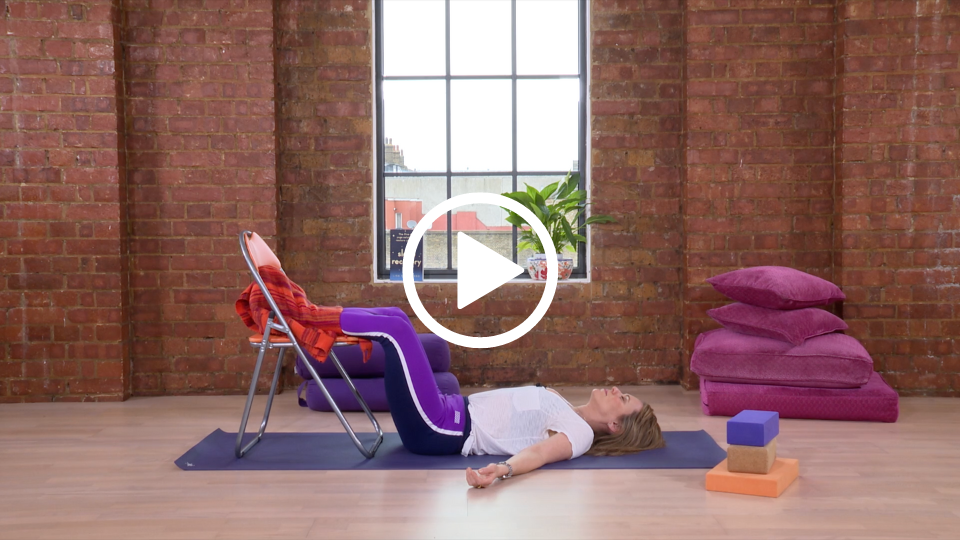
This simple modified version of Viparita Karani using a chair down-regulates the nervous system and helps refresh you. Take just 5-10 minutes during the day – it can even be done in the office!
How to do it:
- Check that your body feels comfortable.
- The knees can be directly above, or slightly forward of, the hips.
- Consider using a folded blanket under the head and neck for support.
- Close the eyes and relax, breathing deeply for several breaths.
Two poses to give energy during the day:
Prasarita Padottanasana (Wide-Legged Standing Forward Bend)
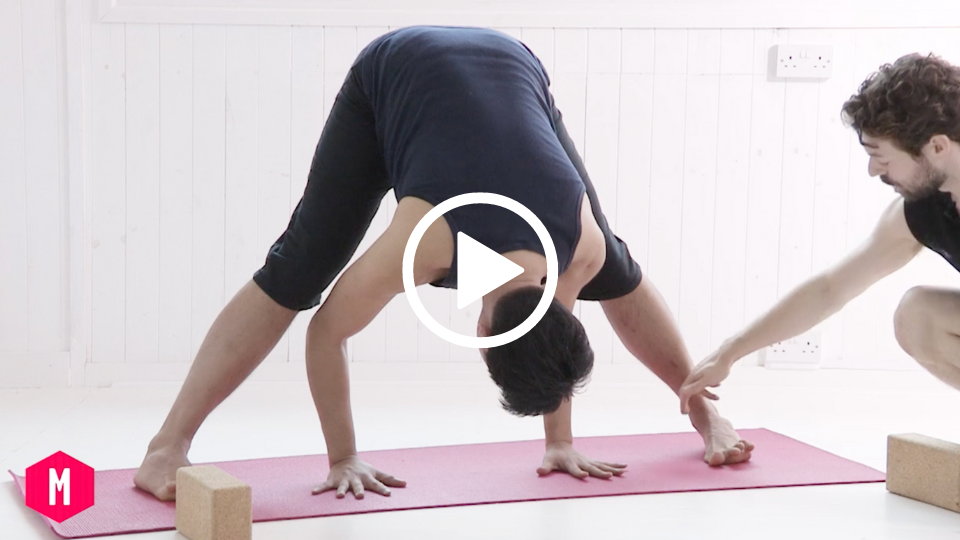
Slowly releasing into this forward fold provides a deep stretch to the hamstrings and calves. The blood release to the brain helps ease fatigue and energise the body.
How to do it:
- Stand facing the long edge of the mat and take a couple of breaths.
- Step the legs out so they are 3-4 feet apart and parallel.
- Place the hands on the hips.
- Root down through the feet and stand up tall.
- Firm through the legs.
- Draw the navel to the spine and lift up through the pelvic floor.
- Broaden across the collar bones as you hinge forward from the hips.
- Place the hands shoulder-width apart on the floor in front of the torso.
- Take a couple of breaths here as the torso reaches forwards.
- Inhale, and on an exhale fold deeper, bringing the hands closer to between the feet.
- Breathe evenly as you continue to push down through the feet, activate the inner thigh muscles and lengthen through the spine from the sitting bones to the crown of the head.
- Enjoy the deep stretch and toning to the abdominals.
- To come out, inhale to bring the hands to the hips. Exhale press down through the feet and hinge back up to standing.
- Bring the feet together and pause for a few breaths in Mountain Pose.
Salabhasana (Locust Pose)
Locust Pose is an excellent back arch for energising and strengthening the back. It counteracts the effects of prolonged sitting and computer work.
How to do it:
- Lie facing down with arms resting back by the sides, palms upwards.
- Rest the head down and take a couple of breaths.
- Lift one leg up, roll the thigh slightly inwards, stretch it back and set it down.
- Repeat for the other leg.
- The little toe side of the feet should be touching the floor.
- Firm the legs. Now lightly draw the tailbone in so that you feel the pubic bone pressing into the floor.
- Keep the forehead resting on the floor.
- Keep the legs firm and make sure the tops of the feet are evenly resting into the floor.
- Lift the shoulders away from the floor and slide the shoulder blades down the back towards the waist.
- Inhale and lift the head, chest and legs away from the floor.
- Exhale, stretch the hands back towards the feet and reach the chest forwards.
- Wrap the thighs inwards, drawing the tailbone in.
- Lengthen the back of the neck and soften the eyes.
- Breathe softly and evenly as you maintain the extension and lift of the spine.
- Exhale and release down to the floor and rest.
3 Yoga Sequences to Prepare You for Bed
- Lisa’s Simple Sleep sequence from her Sleep Recovery Series provides a straightforward 15-minute bedtime stretch routine.
- Get ready for sleep with Clive Fogelman is a slow, grounding gentle practice that prepares the body and mind for sleep.
- Max Strom’s Sleep Health Sequence comprises stretches and breath work to help you prepare for bed.
YOGA FOR SLEEP: RESTORATIVE YOGA

Restorative yoga takes place on the floor and enables the body to rest completely into poses which slow the heart rate down and calm the nervous system. Props such as blankets, bolsters, bricks and blocks support the body and enable it to feel ‘held’ so that we are able to let go of tension.
4 of the Best Restorative Yoga for Sleep Sequences:
- This Restorative Pick Me Up class from Lisa teaches the set-up of some key restorative postures.
- Gabriella Espinosa’s restorative yoga for restful sleep is suitable for just before bedtime.
- A nourishing restorative sequence with Jean Hall.
- If you’re short on props, how about this one blanket restorative session with Adam Hocke? Most of us can find a blanket somewhere!

YOGA FOR SLEEP: YIN YOGA
Yin Yoga is a slow-paced, passive style of yoga where asanas are held for longer periods, typically 3-10 minutes. It targets connective tissues such as fascia, which surrounds and holds our organs, blood vessels, bones, nerves and muscles in place.
Practitioners of Yin yoga report the following effects:
- Reduces stress and anxiety
- Calms and balances body and mind and facilitates relaxation
- Promotes sleep
- Releases the fascia and improves joint mobility
- Boosts circulation
- Improves flexibility
- Encourages the flow of chi and prana
For many people the slow, deliberate and passive nature of this form of practice enables them to feel grounded and restore some balance. Why not experiment for yourself?
Read more about Yin Yoga and what it is, in this article by Norman Blair
4 Yin Yoga for Sleep Classes
- Yin Yoga: Close to the Ground aims to calm things down with some stretches and prepare the body for sleep. With Norman Blair.
- Restoring Yin Yoga with Norman Blair.
IS YOGA NIDRA THE SAME AS SLEEP?
Often referred to as ‘yogic sleep’, Yoga Nidra is a practice that nestles somewhere between guided relaxation, meditation and visualisation. Uma Dinsmore-Tuli describes it as a ‘conscious way to rest that invites you to nourish every aspect of yourself’. Benefits of practising yoga nidra are said to include deep relaxation, reduction of stress and improved sleep.
“Whilst it may look as if absolutely nothing is happening, the deepest of restoration is occurring!” Uma Dinsmore-Tuli
Uma’s book Yoga Nidra Made Easy, co-authored with Nirilpta Tuli, features 44 audio recordings to support the programme described in the book.
You can also read more about Yoga Nidra and what it is in this article.

3 Top Yoga Nidra Practices:
- Calm and Recharge, a yoga nidra practice with Zephyr Wildman.
- A 30 minutes guided yoga nidra with Dan Peppiatt.
- Uma’s Yoga Nidra to Cool and Relax.
CAN MINDFULNESS MEDITATION HELP ME SWITCH OFF?
The wellness market is awash with apps offering meditations / mindfulness practices that will help us to relax and sleep. There is good reason for this. One of the most common complaints from those whose sleep is disrupted, or who are suffering from sleep deprivation, is the inability to ‘switch off’.
Whilst it is not about ‘switching off’ per se, mindfulness meditation is concerned with having a conscious intention to pay attention in the present moment and with non-judgement. This ‘attention’ is a kind and curious one. It is thought that mindfulness meditation targets and works on cognitive and emotional processes which contribute to poor sleep quality.
There is a growing interest in research about the effects of mindfulness meditation on sleep quality. Results from various studies is mixed and further investigation is warranted. However, it is postulated that the cultivation of present moment awareness may be able to ‘transform engrained cognitive patterns and subsequent maladaptive behaviours’. Furthermore, ‘mindfulness meditation has been shown to decrease ruminative thoughts; diminish emotional reactivity; and promote impartial reappraisal of salient experiences. Together these things may facilitate sleep.’
Yoga for Sleep’s Top 3 ‘Sleep Well’ Meditations:
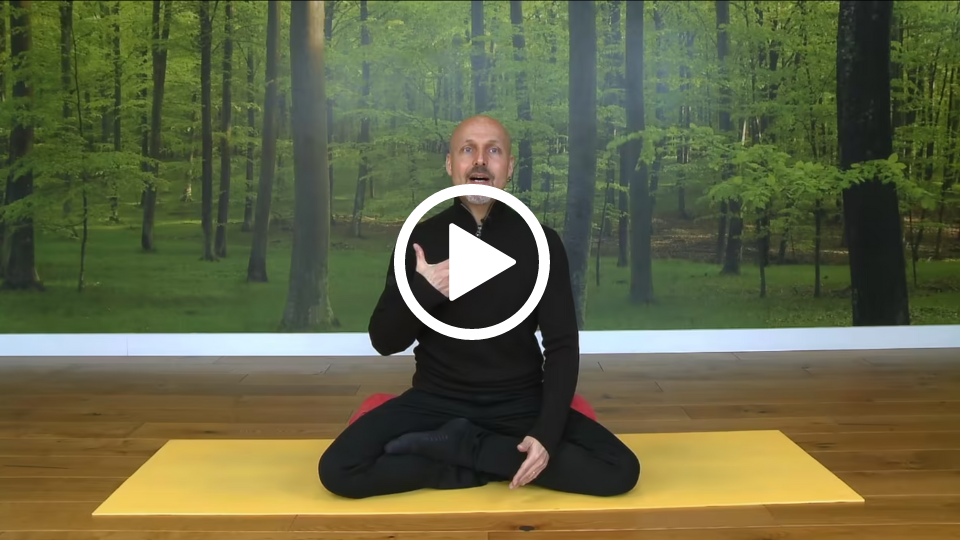
- Lisa’s meditations from the Sleep Recovery Series provide tips on mental digestion during the day to prevent and recover from night-time sleeplessness.
- This Relaxation practice with Dirish is perfect for when you’re feeling anxious, overwhelmed or need to rest.
- When the mind is racing this sleep well meditation with Alexander Filmer-Lorch can help us to settle by bringing the attention to the breath.
HOW DOES BREATHING AFFECT SLEEP?
Breathing is essential and lifelong! It is something we largely take for granted and yet can have a huge impact on how we feel and our overall health and wellbeing.
Our breathing is influenced by many things including our age, environment, disease, injury and emotions. For example, when we are scared, in pain or tense, our breathing speeds up and becomes shallower. The sympathetic nervous system, which is responsible for the body’s various reactions to stress, including ‘fight or flight’, is activated. Conversely, when we feel safe or rested, our breathing slows and deepens. It is the parasympathetic nervous system which produces this relaxing effect.
These influences also work the other way round. That is, the state of our body can affect our emotions. For example, when we smile our brain responds and we experience more pleasant emotions. Similarly, how we breathe can have an impact on our physiological processes and functions. Effective yoga for sleep will almost certainly include exploration of the breath.
Pranayama is often described in yoga as ‘breath control’. Since breathing is largely an autonomic process, ‘control’ may be rather a strong word for it! However, pranayama practices are generally concerned with lengthening, directing, restraining and regulating the movement of the breath. This means we have the ability to direct our breath in ways that helps us to move away from ‘fight or flight’. By focusing on our breath we can choose to feel calm rather than anxious; relaxed rather than skittish; ready for bed, rather than ready to fight off a sabre-toothed tiger!
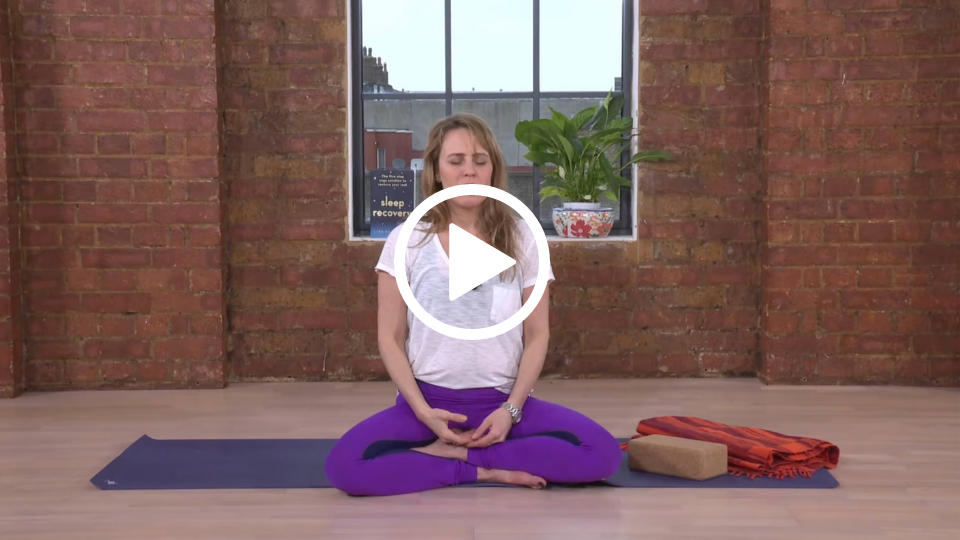
- Lisa’s Sleep Recovery Series session 5 is a breath-work tutorial which shares techniques to practice at any time or before bed to calm down the nervous system and relax.
- This class with Dirish combines yin yoga, restorative yoga and breath work to help us move into calm.
Note: There are various sleep-related breathing disorders such as sleep apnea or hypoventilation disorders. We recommend that you consult a specialist if you think you might be suffering from any of those.
HOW DOES SOUND HEALING HELP WITH DEEP SLEEP?
Did it surprise you to see the words ‘sound’ and ‘healing’ linked together in the same sentence? The practice of immersing oneself in sounds at different frequencies is not new. Tibetan singing bowls have been used for over 2000 years and the didgeridoo has long been played by Australian aboriginals to heal the sick.
A ‘sound bath’ (no water required) involves relaxing and listening to sounds in a comfortable environment. These sounds may be generated from singing bowls; tuning forks; gongs; bells; or even from nature. The frequencies and vibrations of the sounds surround you and can be felt in the deepest parts of the body. For many this creates a meditative state and may enable the brain to access deeper states of consciousness. One observational study found that Tibetan singing bowls had a positive impact on mood, anxiety and spiritual wellbeing.
Kirsty Norton explains in Sound Healing: How Can Sound be Therapy that the therapeutic application of soundwaves can help to restore in us a coherent state of balance and harmony.
“Sound works on different levels including mental, emotional, spiritual and physical.”
Kirsty Norton
A little like meditation and breathing practices, sound therapy may help to activate the parasympathetic nervous system and in turn, perhaps, contribute to improved sleep.
Not everyone would classify ‘sound healing’ as a yogic practice. However, an increasing number of yoga teachers and studios have sound baths and sound experiences as a part of their offering. We’ve included it here because of the meditative benefits which can potentially aid sleep.

CAN YOGA CURE INSOMNIA?
Let’s start with what we mean by insomnia. Most of us experience temporary periods of sleep deprivation in our lives and these can be caused by all sorts of things, from a stressful time at work to anxiety about an upcoming event. Eventually though, exhaustion catches up with us and we sleep.
When sleeplessness is longer term, perhaps caused by health issues, the bedroom can become inextricably associated with restless, sleepless nights. This causes stress, which floods the body with adrenalin. Any sleep that insomniacs do manage to get may be of poor quality. The likelihood is that they will wake up feeling exhausted, confused and stressed. The inability to sleep compounds these feelings of stress. Chronic insomnia is diagnosed when these cycles of stress and sleeplessness last several months.
If you’re worried then it’s worth consulting a medical professional to check whether it may be caused by hormones, thyroid, breathing or other medical issues. Note: it’s estimated that a small percentage of the population suffers with Circadian Rhythm Sleep Disorder, which occurs when the body’s internal timekeeping system does not align to the 24-hour day.
Treatment will depend upon a specific diagnosis. For most people the cycle of insomnia can be broken by managing the stress that leads to hyper-arousal. This is, again, where yoga practices can be beneficial.
In Sleep Recovery, Lisa provides tools such as the sleep tracker to examine our current sleep patterns and drill down to the root of the problem. We are most likely to succeed when we take a determined and systematic approach to make changes that will support quality sleep.
WHAT COURSES CAN I TAKE TO IMPROVE MY SLEEP?
Sleep Recovery Programme
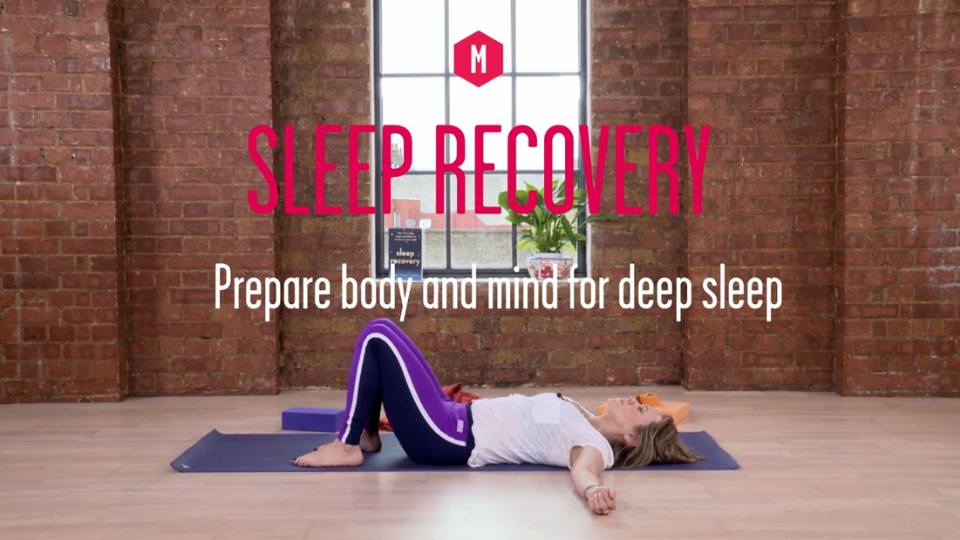
The Sleep Recovery Programme with Lisa Sanfilippo comprises seven classes designed to help you get back on track with your sleep. They work in an integrated and holistic way to help repair the body’s relationship with sleep; rebalance energy levels throughout the day and reclaim your mind.
- Simple Sleep
- Deeper Sleep Sequence
- Restorative Pick Me Up
- Simple Morning Wake-Up
- Breathe to Relax
- Marma Points for Relaxation
- Meditations
The Sleep Challenge

The Sleep Challenge is a 7-day commitment to improve sleep habits. Each day’s blog is packed with yoga for sleep resources and tips to help you develop a sustainable routine for sleep. Get started with Day 1.
Sound Healing Journey for Relaxation
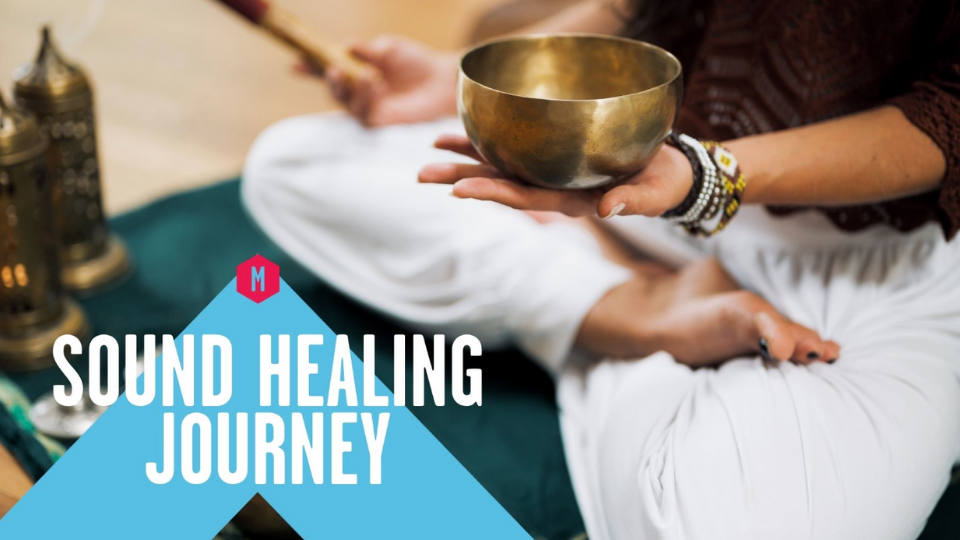
A beautiful collection of audio sound healing experiences that will change your brain wave state to take you into rest and relaxation, restoring balance and harmony. Kirsty Norton is your host.
Yoga Nidra Elements Series
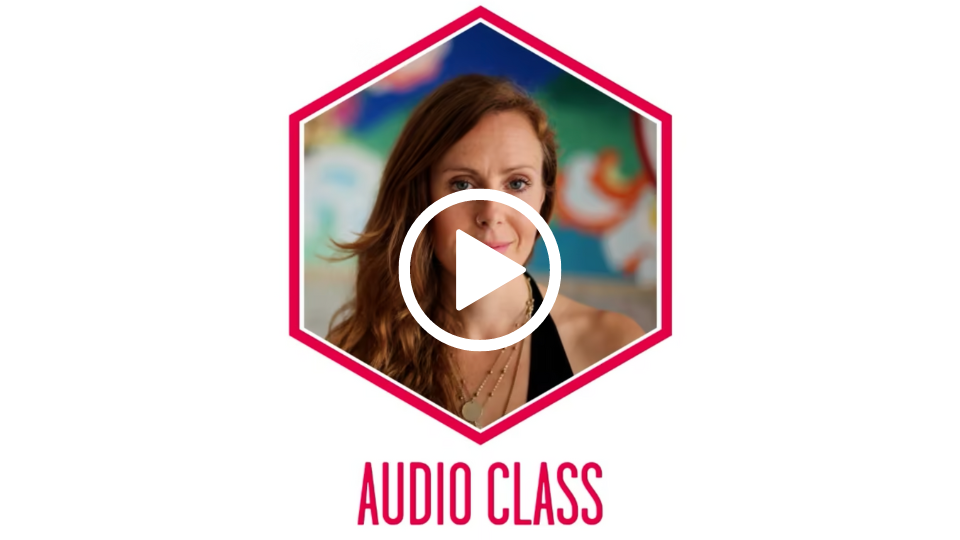
Lucy McCarthy’s series of Yoga Nidra classes focuses on the elements. These audios can be used throughout the day to help balance out energy and leave you feeling nourished and enriched.
- Water Access a state of ease and fluidity
- Air Enter a sweet space of inner ease
- Fire Stand in Your Power
- Earth Become grounded and centred
- Sacred Space Reclaim your spaciousness
HOW DO I KNOW IF I’M GETTING ENOUGH SLEEP?
The NHS advice is that, on average, adults need 7-9 hours of sleep per night. It is, however, recognised that the optimal quantity of sleep can vary between individuals. Increased amounts of sleep do not necessarily correlate with quality sleep and overall wellbeing.
We may be better off assessing the quality of our sleep. Whilst this is subjective, here are some of the things we might track for ourselves:
- When you awaken, how many disturbances did you experience during the night (the fewer the better)?
- How energised do you feel for the day ahead?
- Do you feel ‘sharp’ and is your recall of facts good?
- Do you feel ‘softer’, perhaps more able to extend kindness and generosity to fellow humans (and be less likely to ‘snap’ at others).
- Do you fall asleep immediately when you head hits the pillow? If so, this can be an indication that you are not getting enough sleep.
Consider keeping a log for a period of 2-4 weeks to track your sleep and other lifestyle factors. In addition to the points above, information can include:
- Times you went to sleep and woke up
- What and when you ate.
- Any stimulants such as caffeine or alcohol consumed.
- Exercise undertaken.
- Your yoga practices!
- Any other factors such as sickness or menstrual cycle.
Lisa Sanfilippo provides a useful template for ‘sleep tracking’ in Sleep Recovery.
WHAT ELSE?
You have likely heard about the concept of sleep hygiene – practices and routines that help prepare us for a good night’s sleep. Professor Matthew Walker’s two top tips are:
- Build in regularity – aim to go to bed and get up at the same time each day, where possible.
- Sleep in a room at a temperature of around 18 degrees centigrade. Most of us sleep better in cooler temperatures than warmer ones.
The quality of our nutrition, and even when we eat, can also have a bearing on how well we sleep. We are advised to allow a minimum of two hours between finishing our last meal and retiring for the night.
Check out how foods rich in tryptophan are amongst those that will help you sleep in this article by Toral Shah, founder of The Urban Kitchen.
Further reading on Yoga for Sleep:
- You can take a look at Kat’s top tips for quality sleep.
- Seven tips to sleep in the summer heat
- Meditate in bed, calm your mind and improve your sleep
- Moving into a good night sleep
NEXT STEPS: “I’m ready to improve my sleep… WHERE SHOULD I START?“
Create Sustainable Habits
For many people who struggle with sleeplessness, the key is to develop new, sustainable habits that will lead to a better night’s sleep. Take it a step at a time.
Get curious and pay attention
Could your first step be to track your current sleep patterns for a couple of weeks and ‘diagnose’ where you need to build in interventions?
What have you read or heard in Yoga for Sleep that really speaks to you? How will you respond to that? What new aspect of yoga, class or course are you inspired to try?
Take action
Dive in! The most important thing is to take action. If you do nothing, nothing changes.
To restore your sleep through yoga is not only to invest in your health and wellness. It is to upgrade to a more JOYFUL life. Are you ready for that?
Read more in Yoga for Stress and Anxiety: A Complete Guide
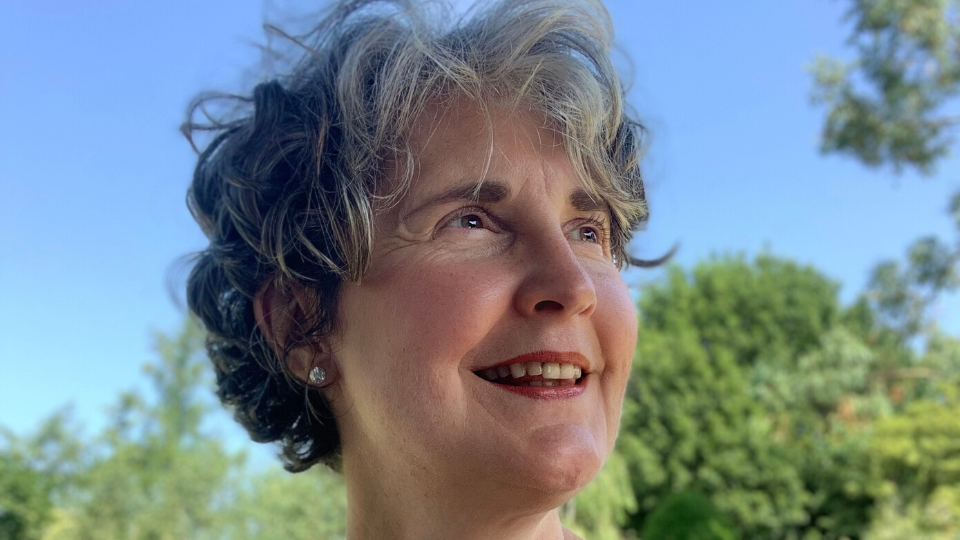
Author: Helen Krag. Helen is a health and wellness enthusiast; observer of human behavioural change; yoga teacher trainee; passionate traveller; and lover of the outdoors.








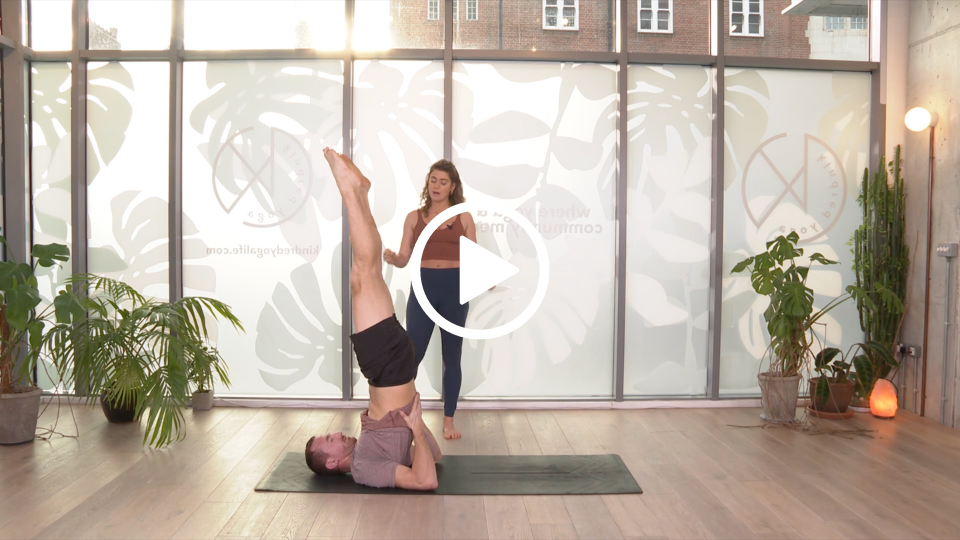




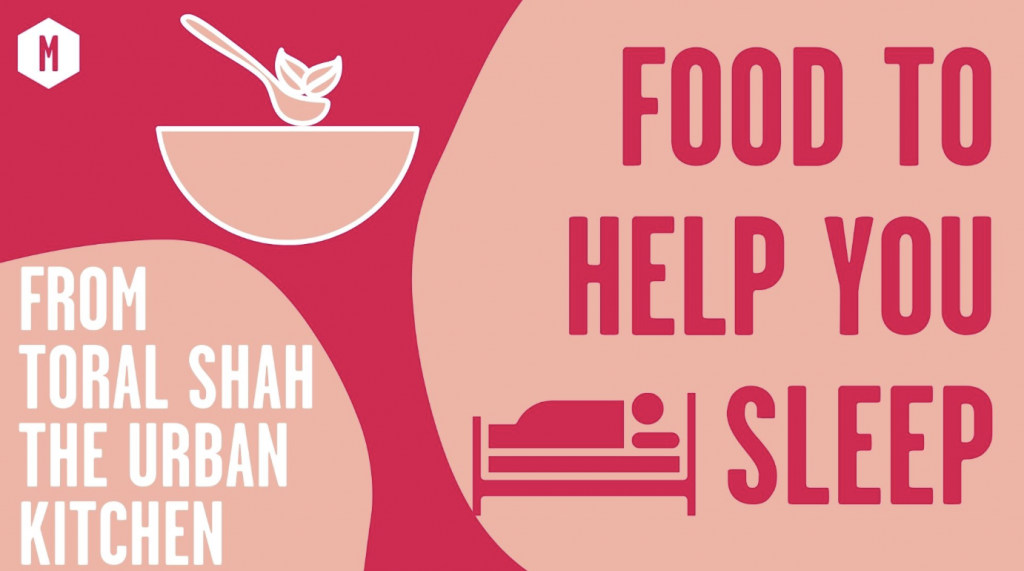
Leave a Reply